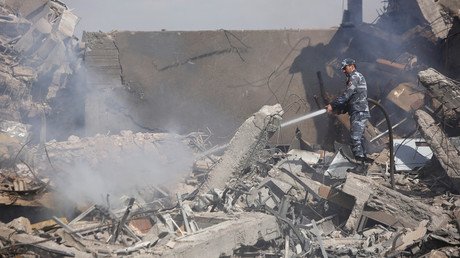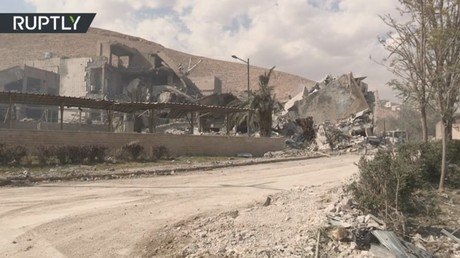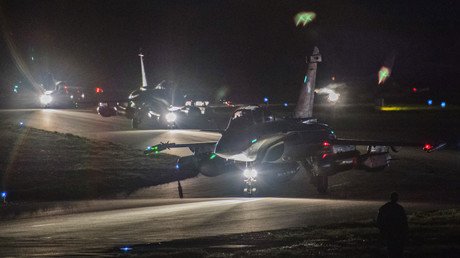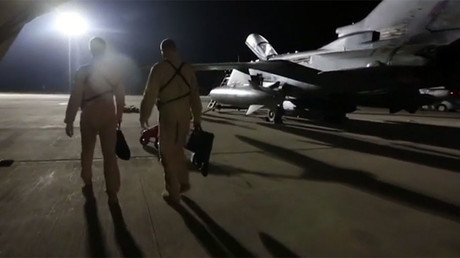'No release of chemicals is best proof there were none' – employee of bombed Syrian research site
An engineer at the now-bombed-out research facility north of Damascus, which the US claims was the heart of Syria’s chemical weapons program, says the labs were making medicine and testing toys for safety.
RT Arabic correspondents have visited one of the main targets of the US-led missile attack on Syria, the Scientific Studies and Research Center in the Barzeh district in northern Damascus. The three-story building was pelted with 57 Tomahawk missiles launched from US warships and 19 air-to-surface missiles, the Pentagon said.
The massive bombardment left it lying in ruins, with its walls and roof almost completely collapsed and lab equipment scattered around.
The morning after the strike, several media outlets, including RT, AFP, CBS News and others were given a tour to the former research facility, now little more than a pile of rubble.
Said Said, an engineer at the facility, told RT Arabic that the very fact that such a trip was possible should serve as an evidence that no chemical weapons program was run at the site.
"You can see for yourself that nothing has happened. I've been here since 5:00 a.m. No signs of weapons-grade chemicals," he said. The researcher said he had worked at the facility for decades, and it used to develop medicine and household chemicals.
Speaking with AFP, Said said that the center's work mainly revolved around devising antidotes to scorpion and snake venoms, as well as testing food, medicine and children's toys for safety.
The Organization for the Prohibition of Chemical Weapons (OPCW) had visited the site several times and never found any traces of banned chemicals. Since Syria joined the Chemical Weapons Convention under a deal brokered by Russia and the US in 2013, the UN chemical watchdog repeatedly confirmed its full compliance with its obligations to dismantle and remove its chemical stockpiles.
In June 2014, the OPCW declared Syria free of chemical weapons.
Said confirmed that the inspectors "several times visited the site with a thorough inspection." He noted that the OPCW, as well as all inspection team members, received "major assistance" from the facility's employees during the raids.
"We even provided them with a special place where they could collect and pack test samples taken during the inspection," he told RT.
The inspectors, he told AFP, would stay in the rooms on the upper floor and use the laboratory equipment, and the staff was "cooperating with them completely."
Being a civilian research center, the staff did not believe it would be identified as the primary target for an attack.
"As we work in civilian pharmaceutical and chemical research, we did not expect that we would be hit," Said told AFP. The allegations that that Barzeh was an integral part of Syria's chemical program were "totally incorrect," he stressed, speaking to CBS News.
The Pentagon said that it hit three targets in Syria, two military bases and the Barzeh facility, alleging that all three were pillars of the Syrian chemical weapons.
Announcing the strikes, US General Kenneth McKenzie said that the US military "believe that by hitting Barzeh, in particular, we've attacked the heart of the Syrian weapons program."
However, reports by the UN's chemical watchdog, the latest of which was filed just a month ago, suggest otherwise.
The report on the first inspection that was conducted between 26 February and 5 March 2017 says that "the inspection team did not observe any activities inconsistent with obligations under the Convention," noting that Damascus had provided unimpeded access to the inspectors "to all selected areas."
The follow-up inspection, carried out in November, did not find any incriminating evidence either.
The March 2018 report reiterates: "As stated in previous reports, all of the chemicals declared by the Syrian Arab Republic that were removed from its territory in 2014 have now been destroyed."
















